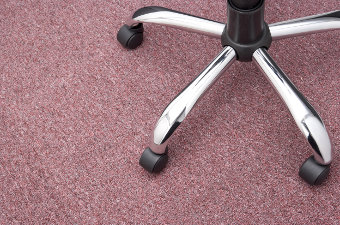Office Furniture Components
Last Updated: 06/07/24
Materials used in office furniture manufacturing include polyethylene terephthalate (PET) in fabrics; plastic, which is integrated in components such as laminated work surfaces and arm rests; aluminum; particle board; and medium-density fiberboard (MDF), which is thicker than particle board. Recovered steel, aluminum, wood, agricultural fiber and plastic are used to make office furniture.
 Product Details
Product Details
To the maximum extent practicable, federal agencies are required to buy sustainable products, which are products that meet the purchasing program(s) listed below.
If there is more than one program listed below, agencies are directed to prioritize multi-attribute products, which meet statutory purchasing program requirements (![]() ) and one or more required Environmental Protection Agency purchasing programs.
) and one or more required Environmental Protection Agency purchasing programs.
Review our frequently asked questions for more information.
|
Product Type
|
Procurement Info
|
Where to Buy
|
|---|---|---|
| Cellulose Loose-Fill and Spray-On |
|
|
| Fabric |
|
|
| Furniture Structure |
|
|
| Particleboard/Fiberboard Component |
|
|
| Plastic Furniture Component |
|
|
| Remanufactured or Refurbished Furniture |
|
 Legal Requirements
Lists federal requirements related to the purchase of this item, including applicable Federal Acquisition Regulation (FAR) requirements
Legal Requirements
Lists federal requirements related to the purchase of this item, including applicable Federal Acquisition Regulation (FAR) requirements
 Guiding Principles
Guiding Principles
Contributes to meeting The Guiding Principles for Sustainable Federal Buildings
 Additional Guidance
Additional Guidance
For products such as office furniture, the applicable Guiding Principle for High Performance and Sustainable Buildings depends on what characteristics are included in the product. If it has recycled content it would be GP 5, if it is low-emitting it would be GP 4, if it's both, it would be included in both. "Low emitting" would be any product that has a low emissions or low VOC standard.
Composite wood products must meet Environmental Protection Agency limits![]() on emissions of formaldehyde. Composite wood product means hardwood plywood made with a veneer or composite core, medium-density fiberboard, and particleboard.
on emissions of formaldehyde. Composite wood product means hardwood plywood made with a veneer or composite core, medium-density fiberboard, and particleboard.


 CPG
CPG